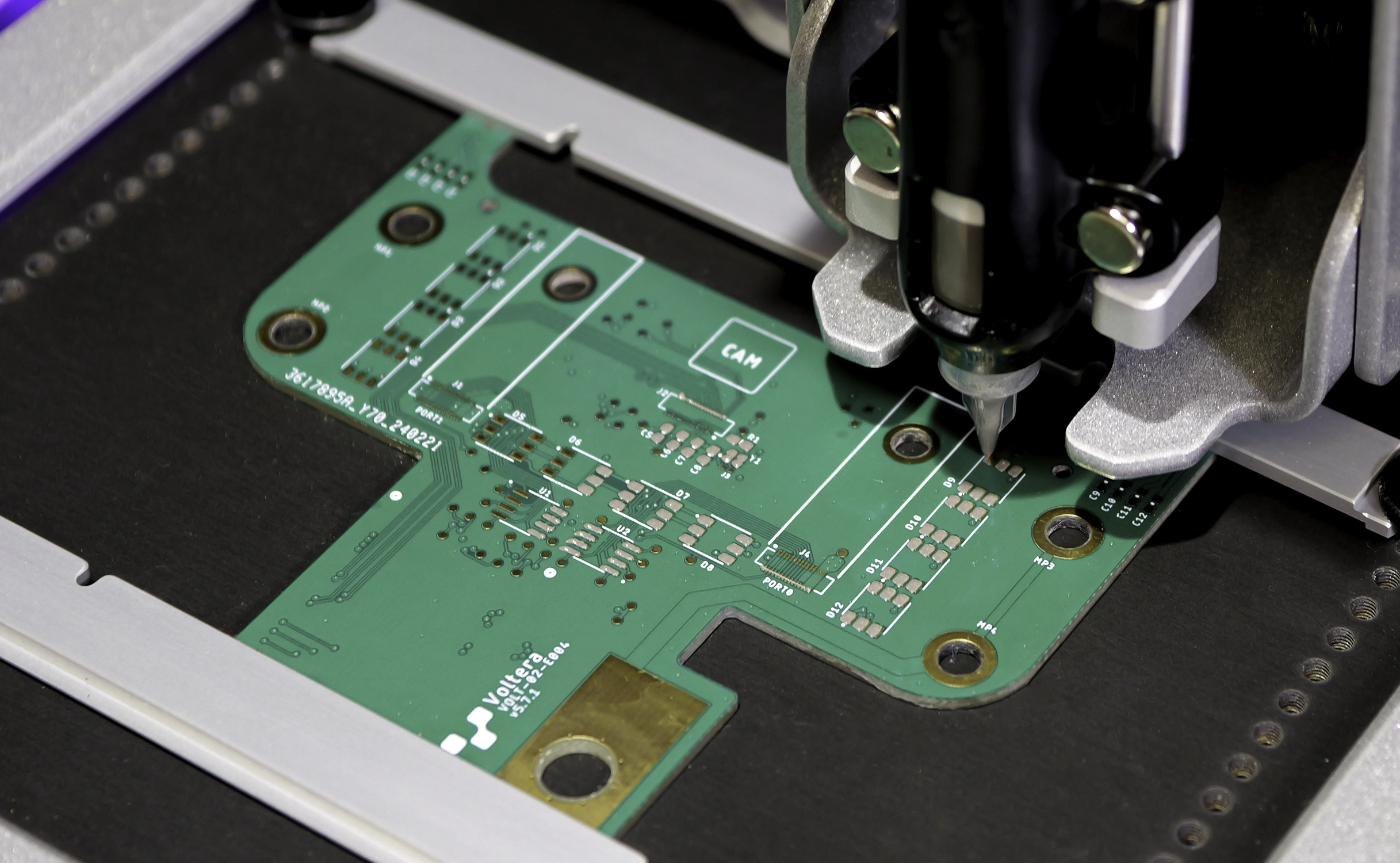Solder Paste Printing
High-precision solder paste dispensing for PCB prototyping and electronics development
Solder paste is a material used to secure electronic components onto printed circuit boards (PCBs) or flexible substrates. It is essentially powdered solder suspended in a flux medium, which helps clean the surfaces being soldered and facilitates the melting and bonding of the solder.
Once the components are positioned on the solder paste, it is heated until it melts and solidifies, creating strong electrical and mechanical connections between the components and the circuit. Solder paste application is crucial for surface-mount technology (SMT) assembly, where components are mounted directly onto the board's surface.


- Consumer electronics
- Semiconductor
- Automotive
- Medical equipment
- Aerospace
- Tin-lead alloys
- Tin-bismuth alloys
- Rosin-based flux
- No-clean flux
- FR4
- FR1
- Ceramic
- Glass
- Polymers
- Silicon wafers
- Thermoplastic polyurethane (TPU)
Our white papers

Dispensing Solder Paste on Factory Fabricated PCBs
Say goodbye to hand soldering and solder wire — discover how quickly and accurately V-One can dispense and reflow solder paste on prefabricated PCBs.
Additional resources
Frequently asked questions
What steps should be taken to ensure clean, consistent solder paste application?
Why is it important to maintain solder paste properties during the dispensing process?
How does direct ink write solder paste dispensing compare to traditional screen printing?
What factors affect the quality of solder paste printing during PCB prototyping?